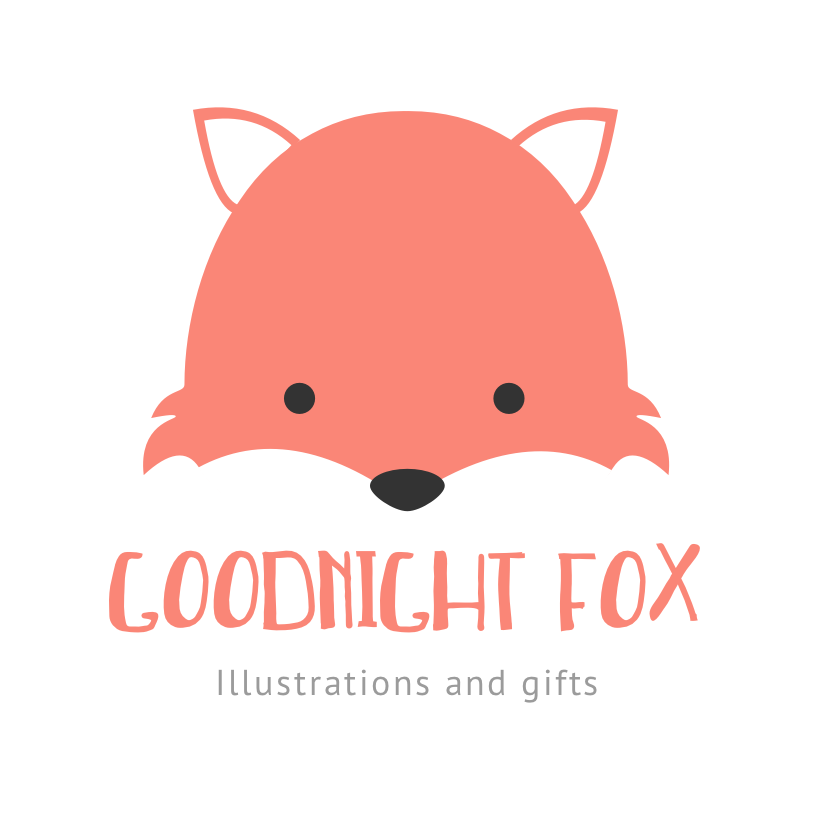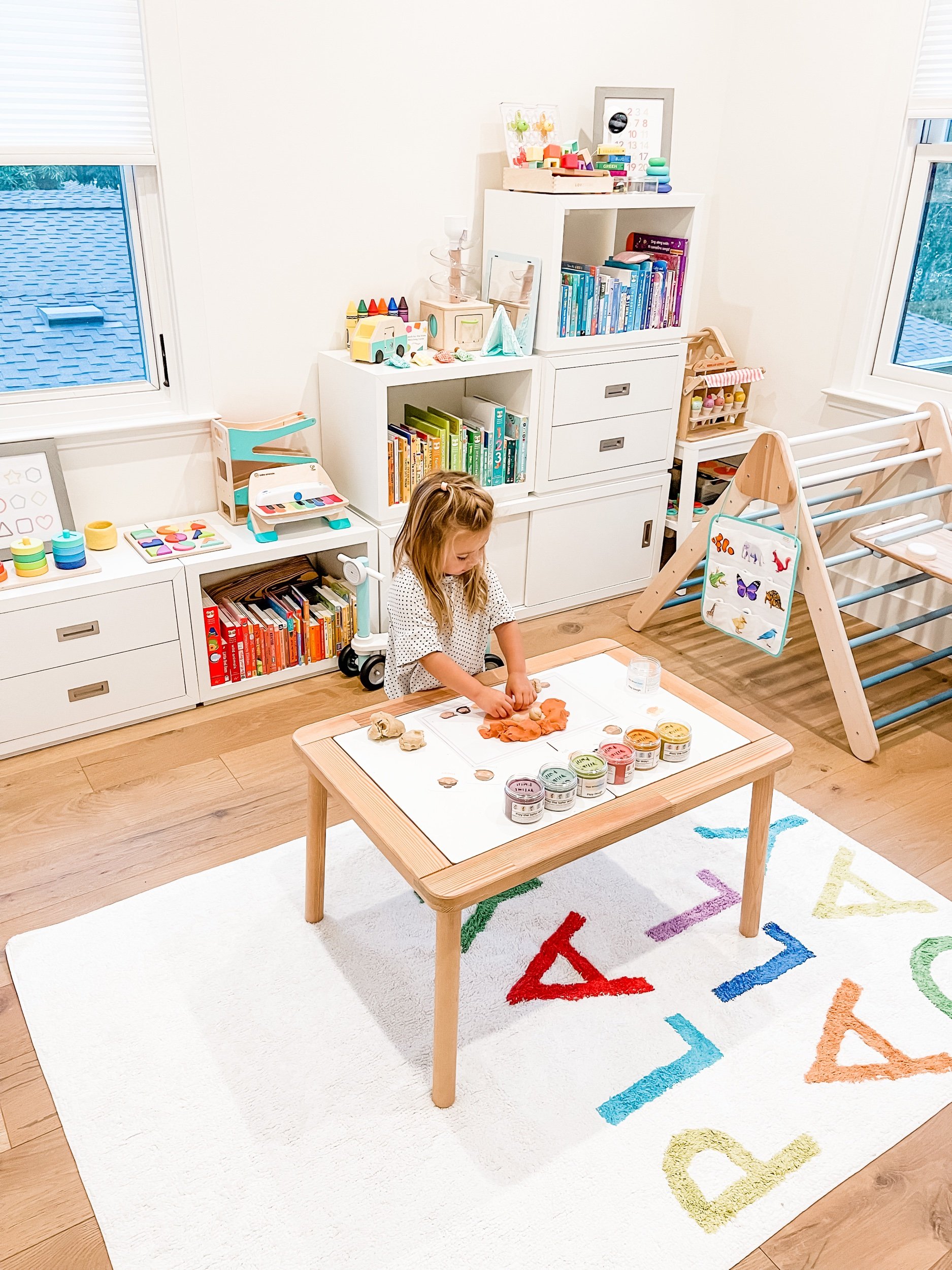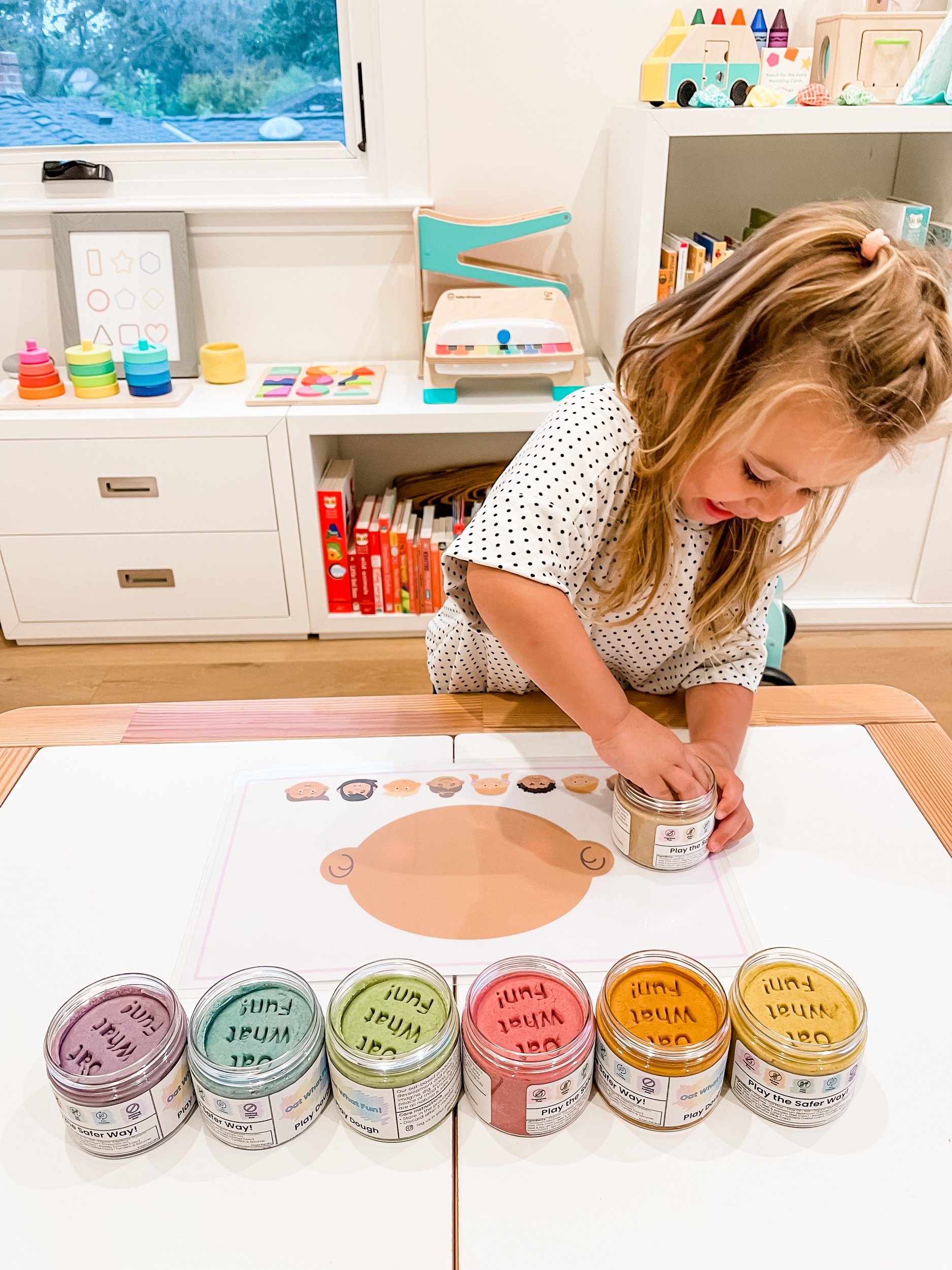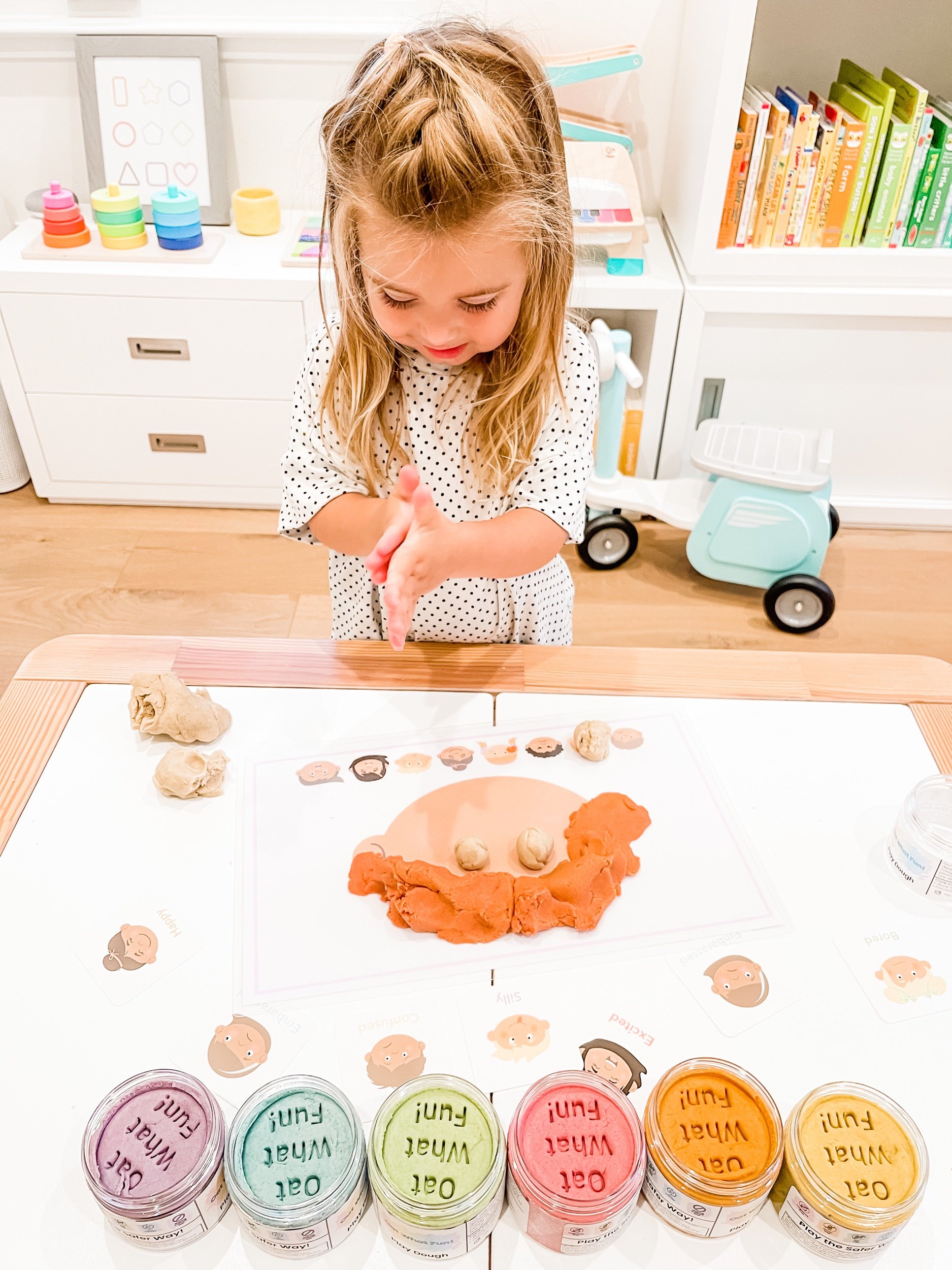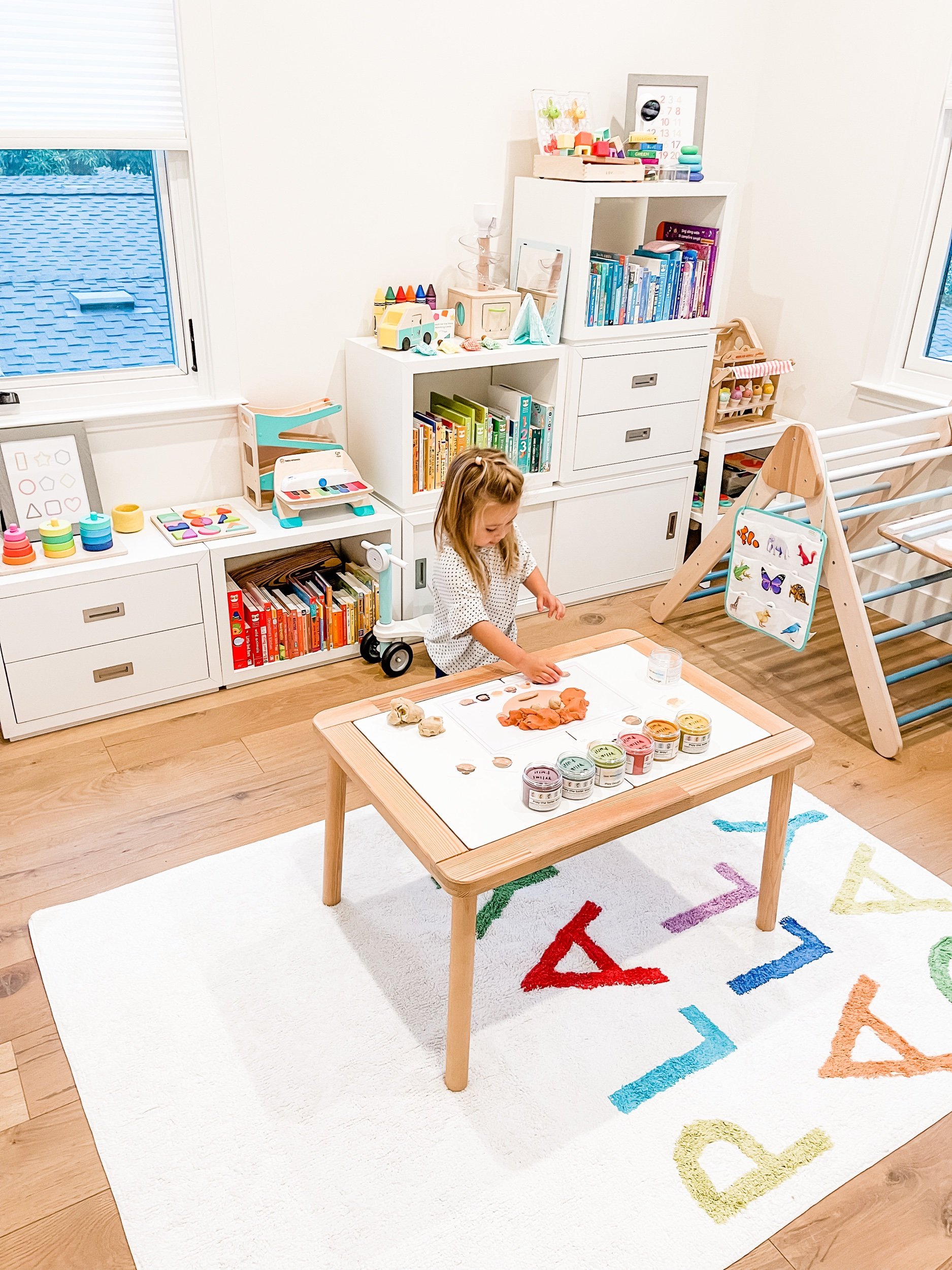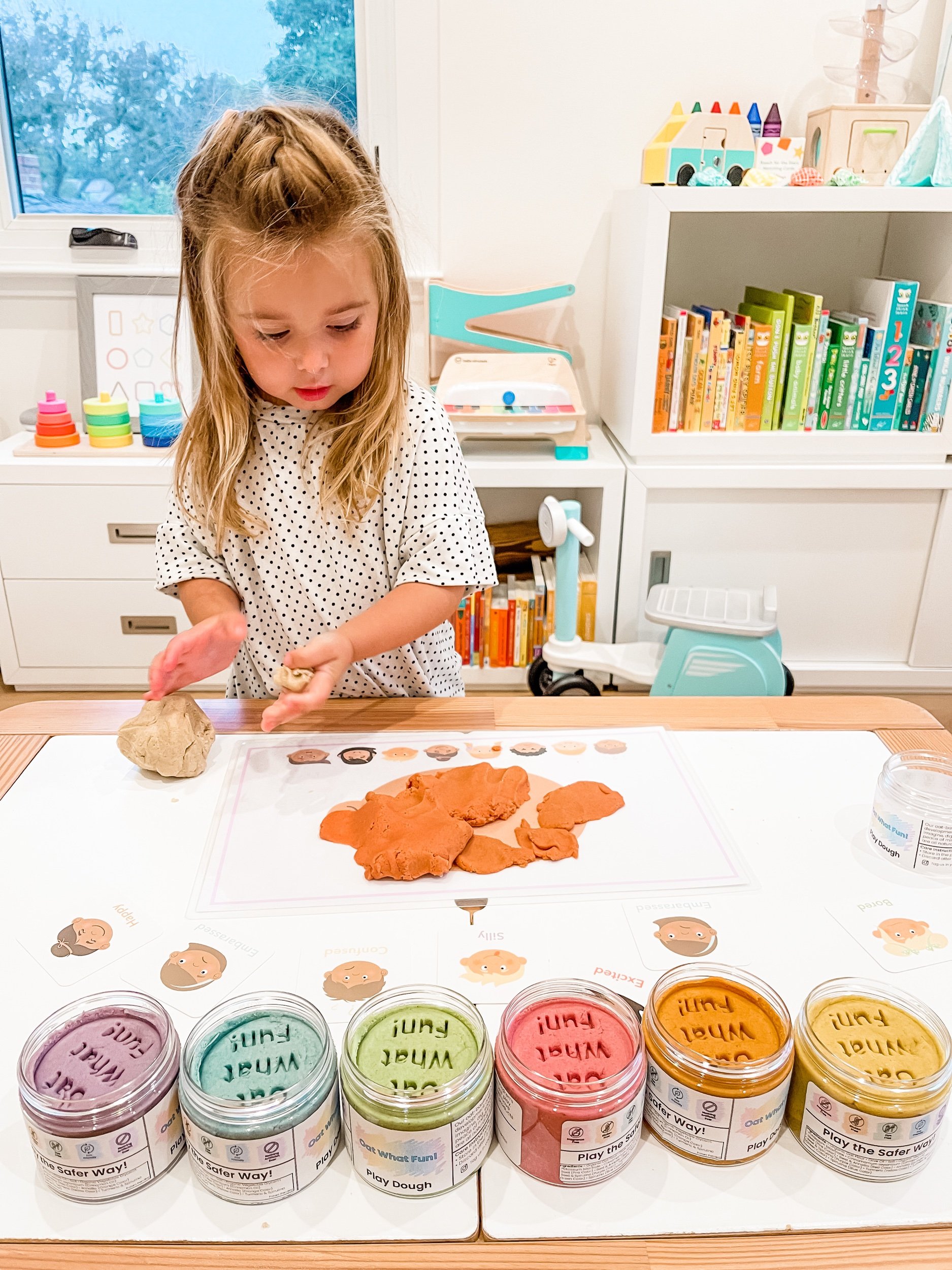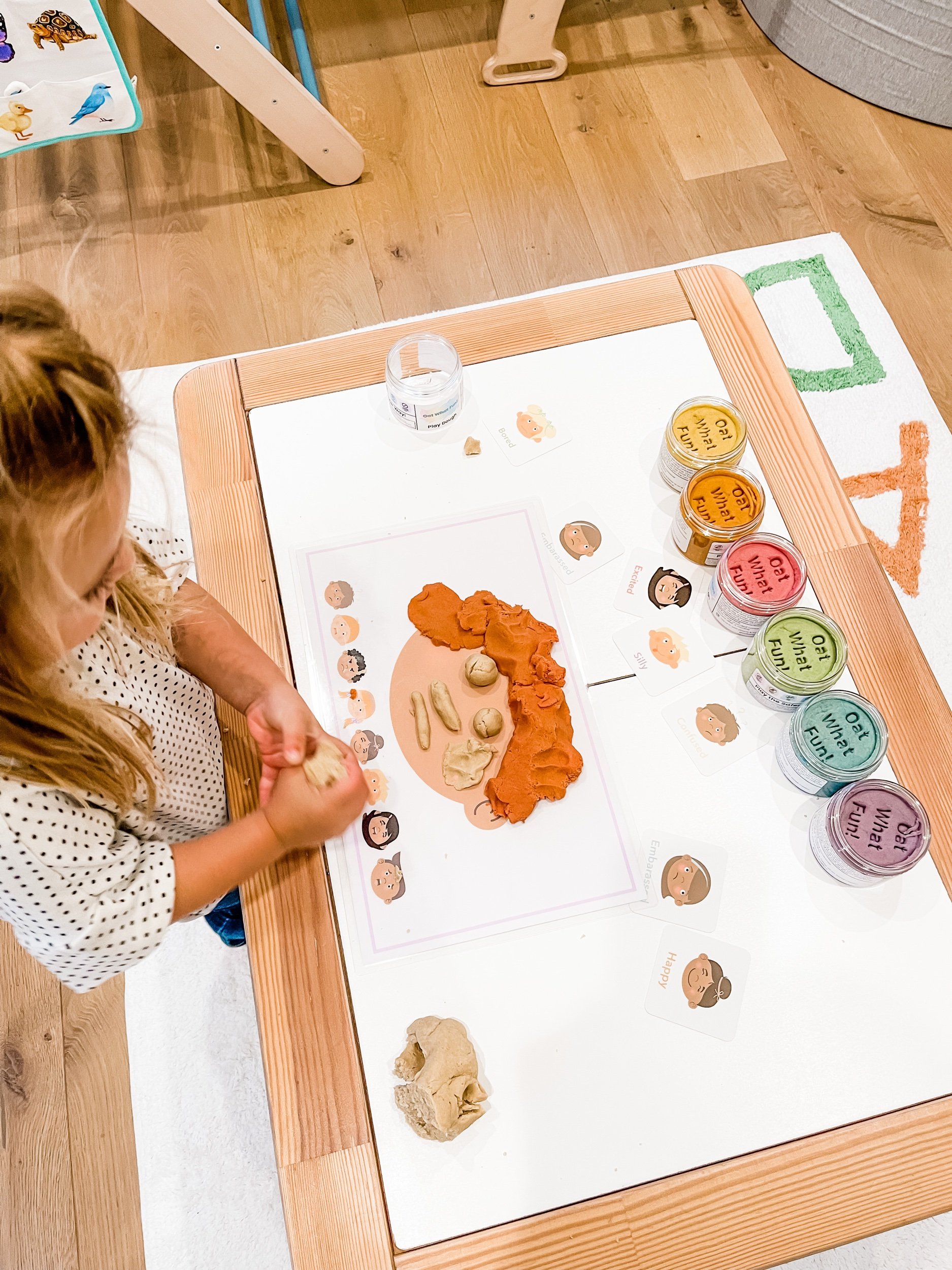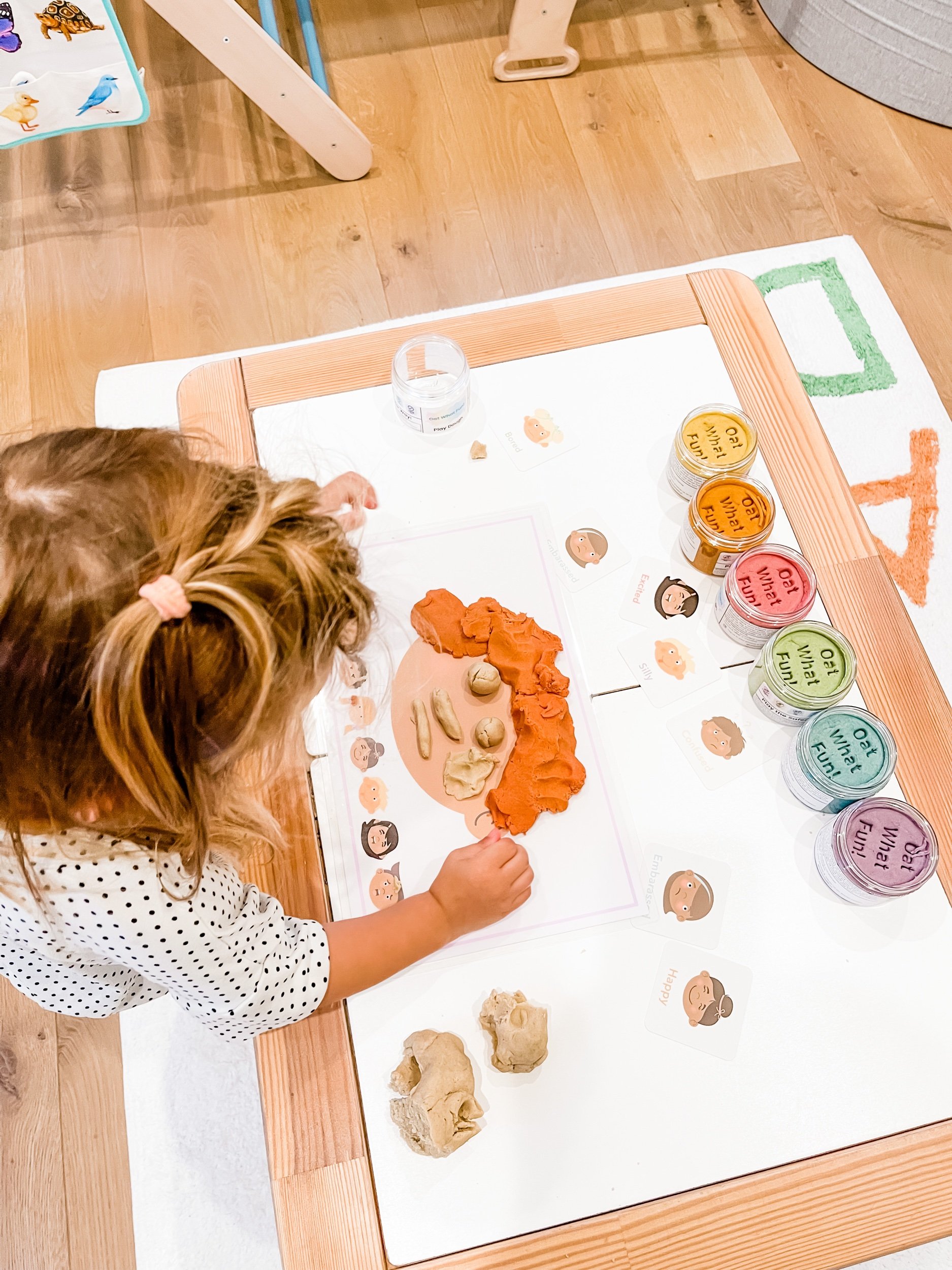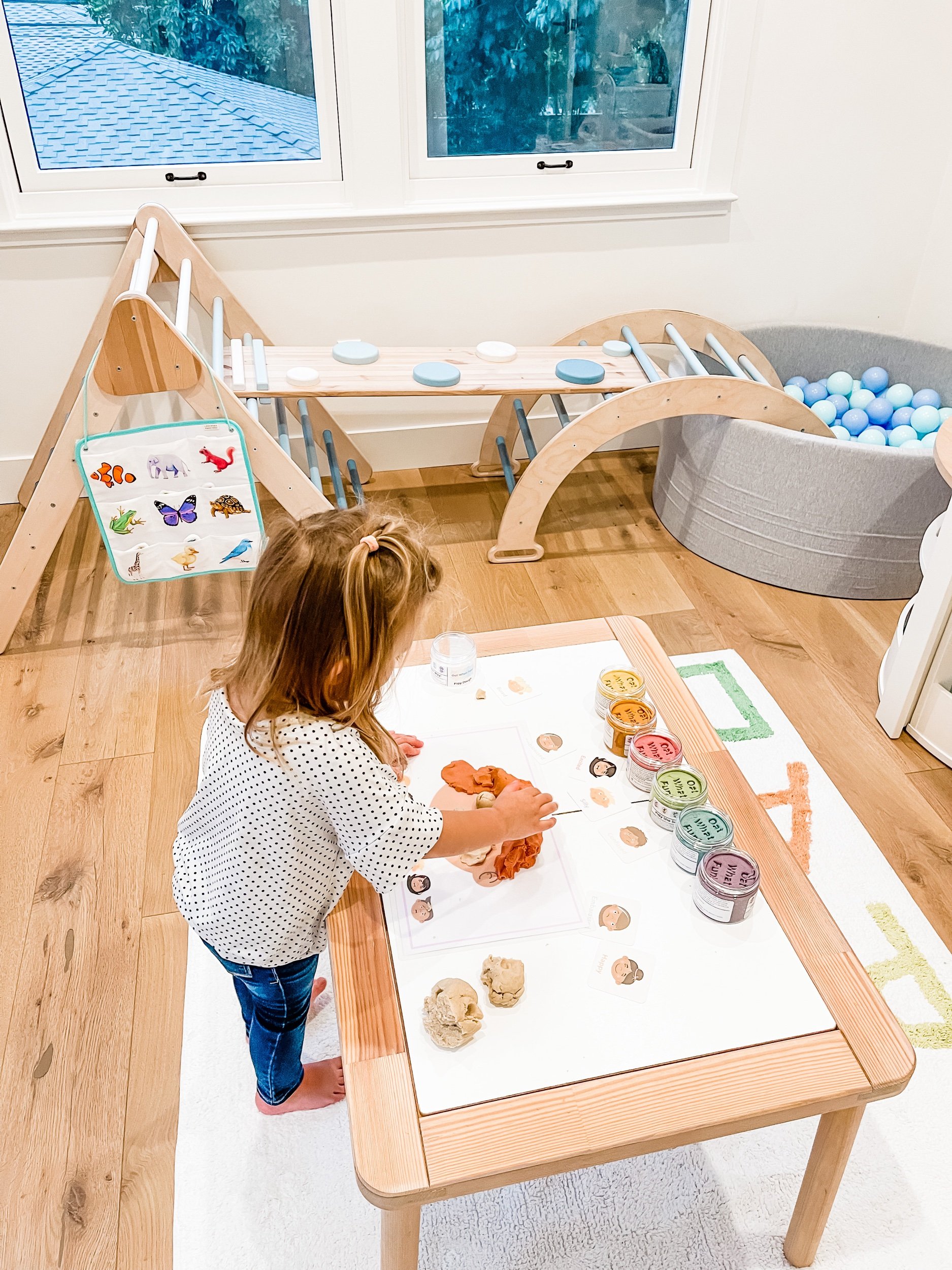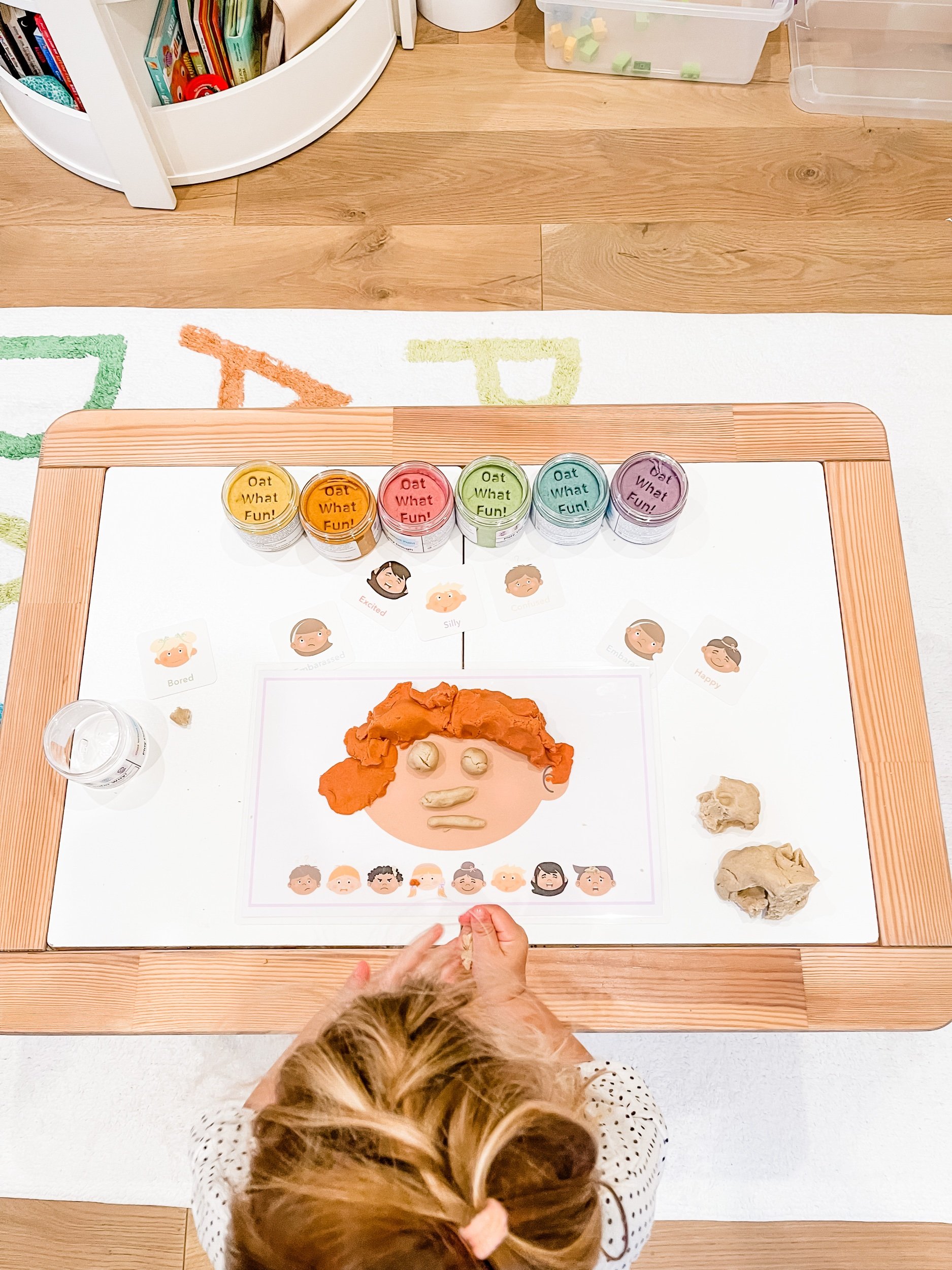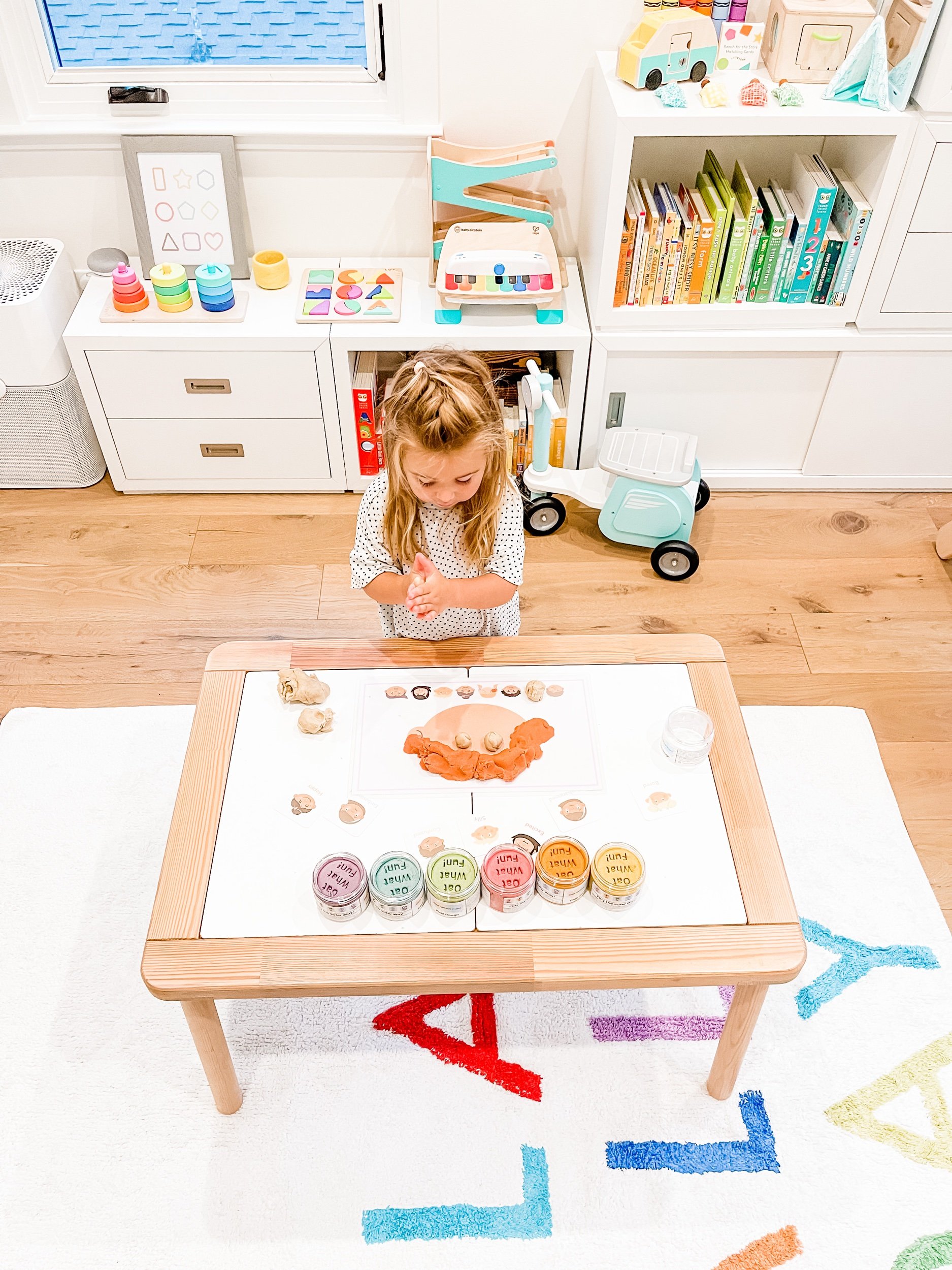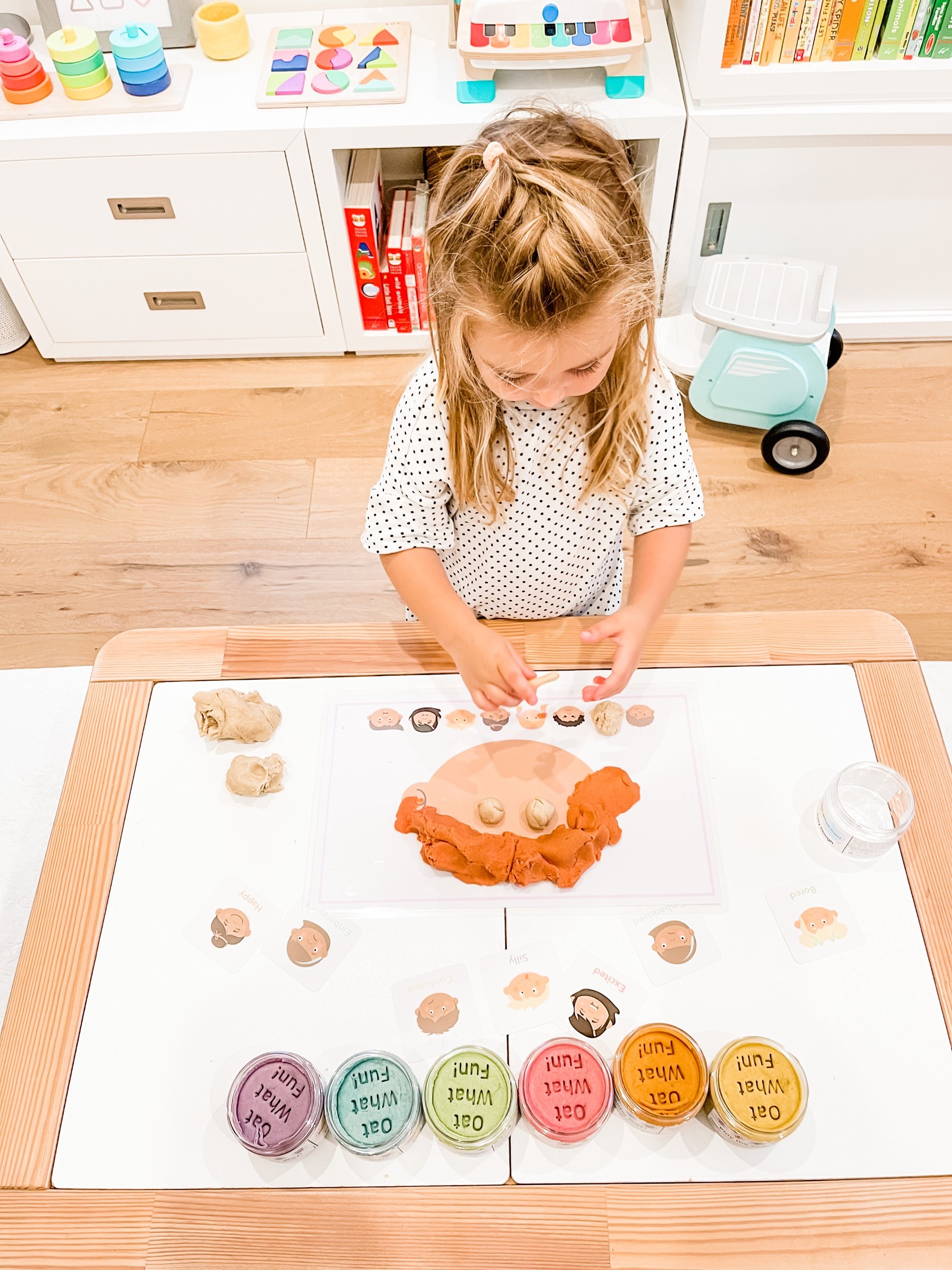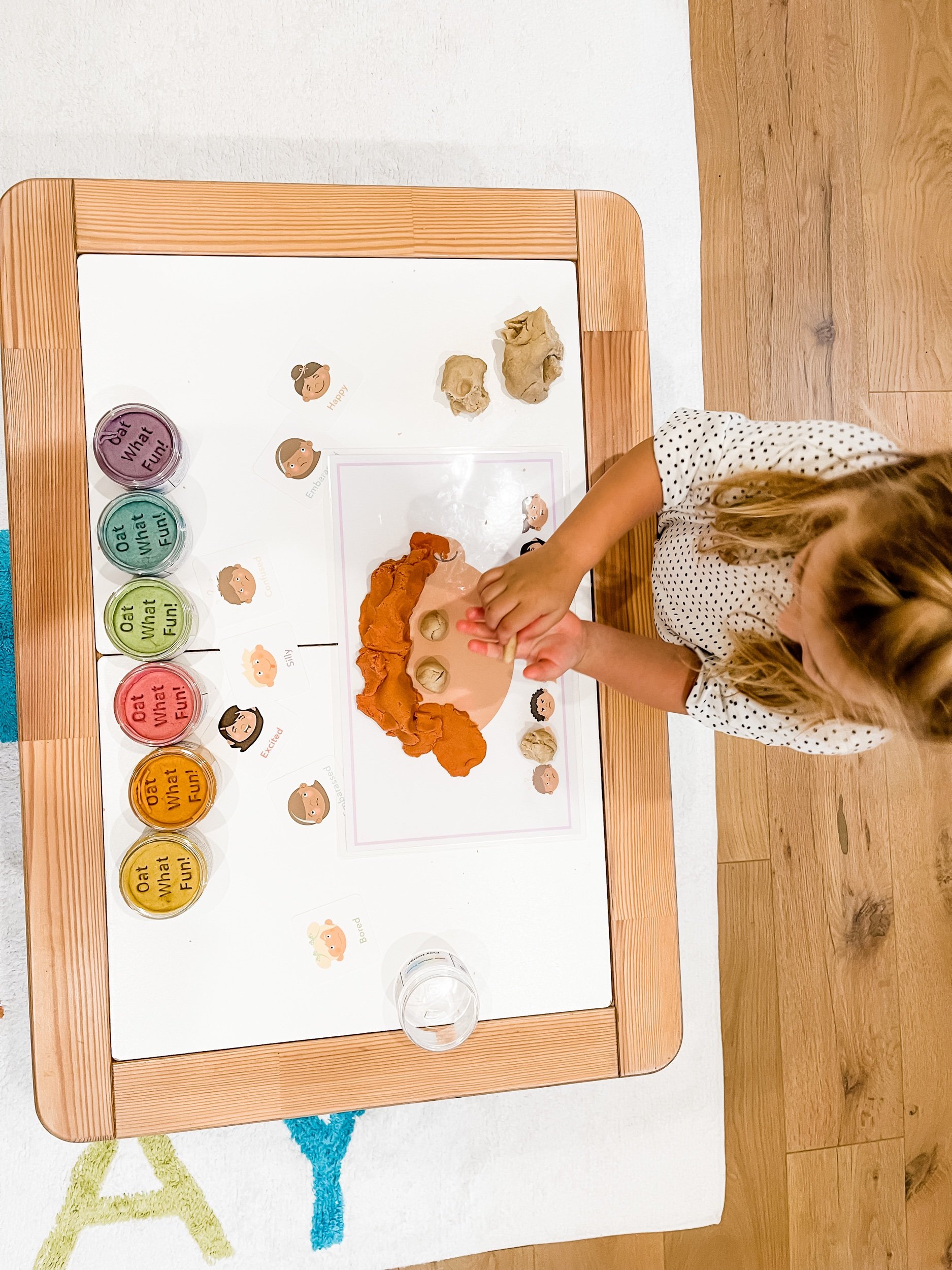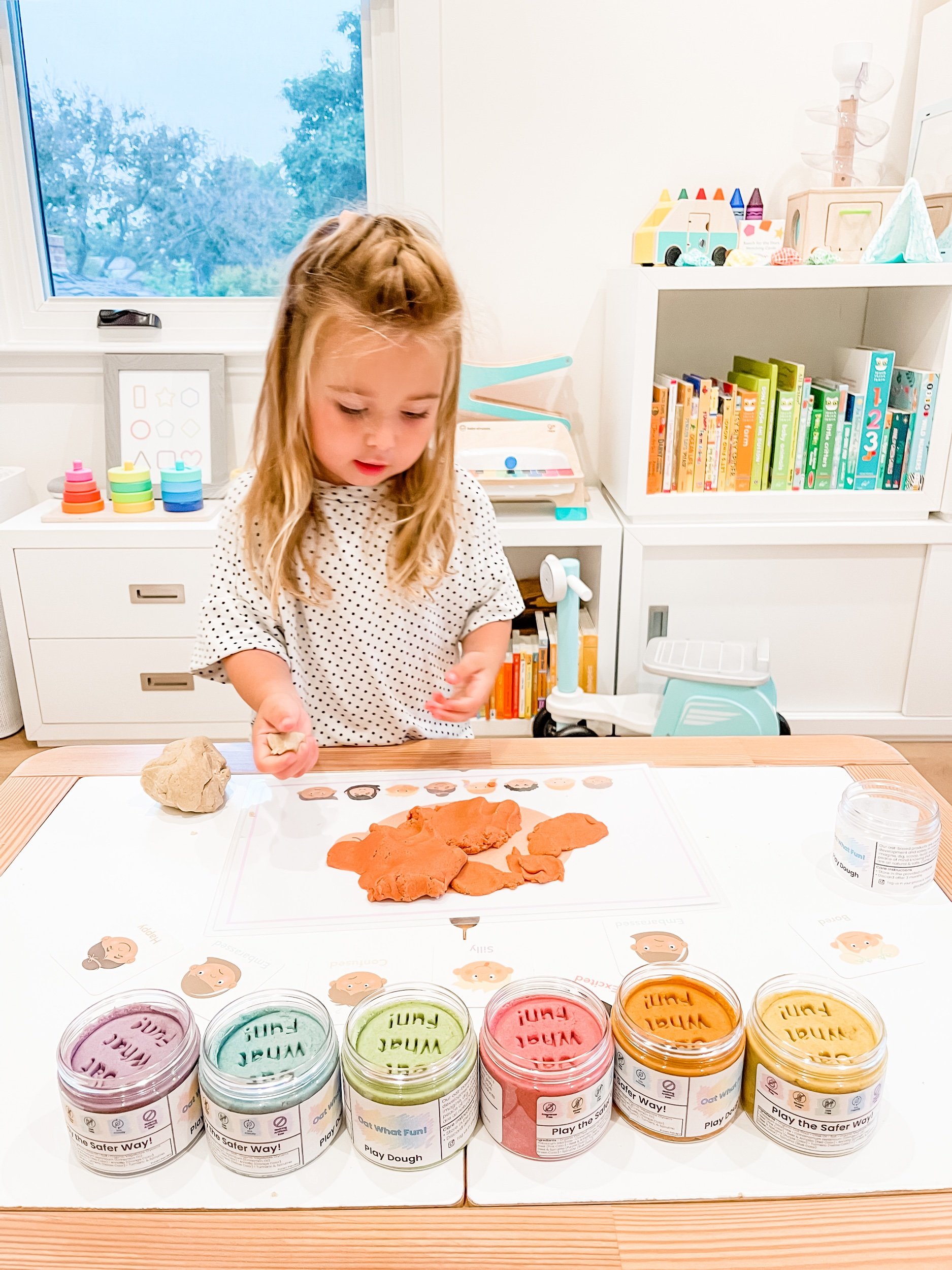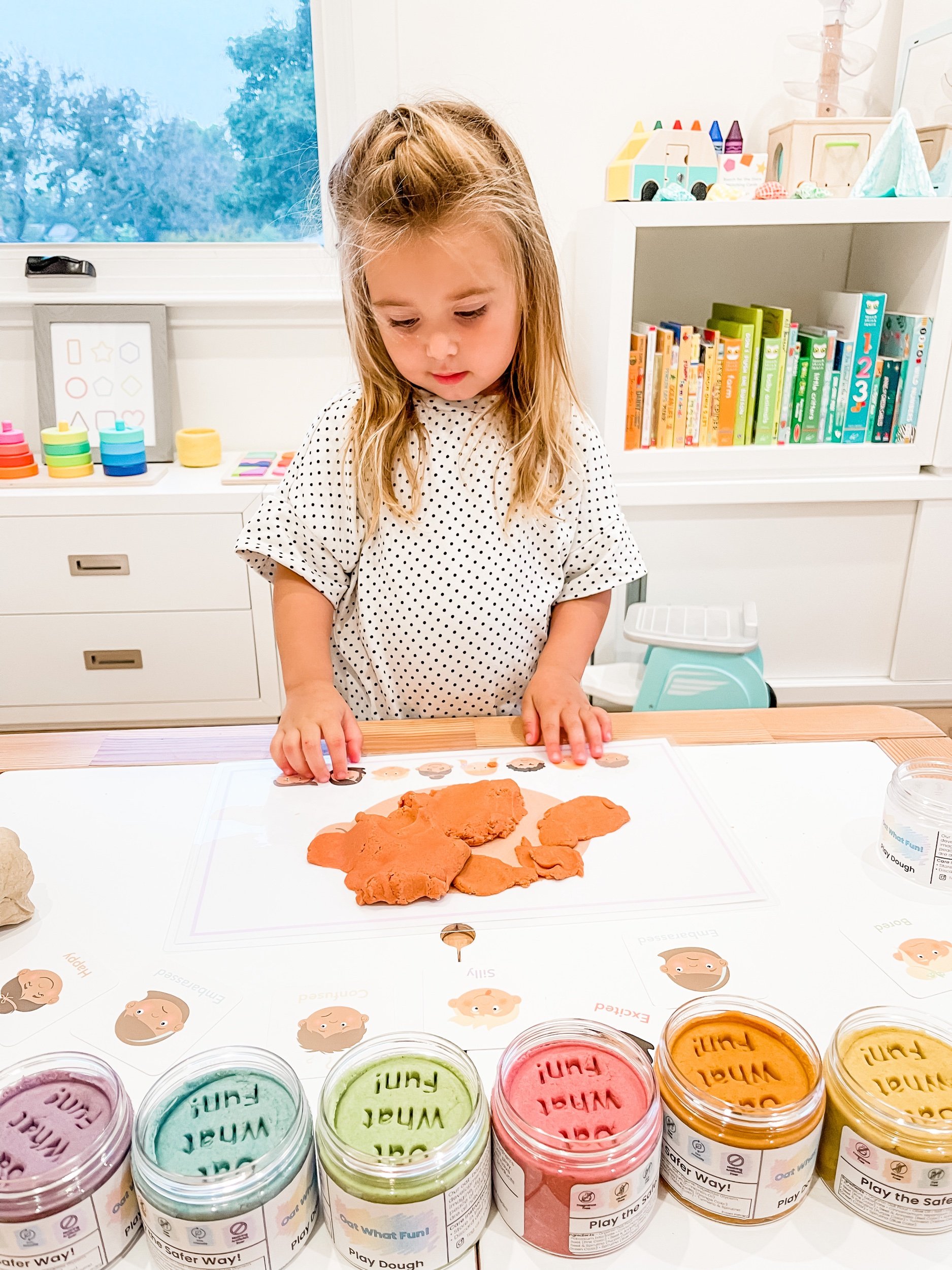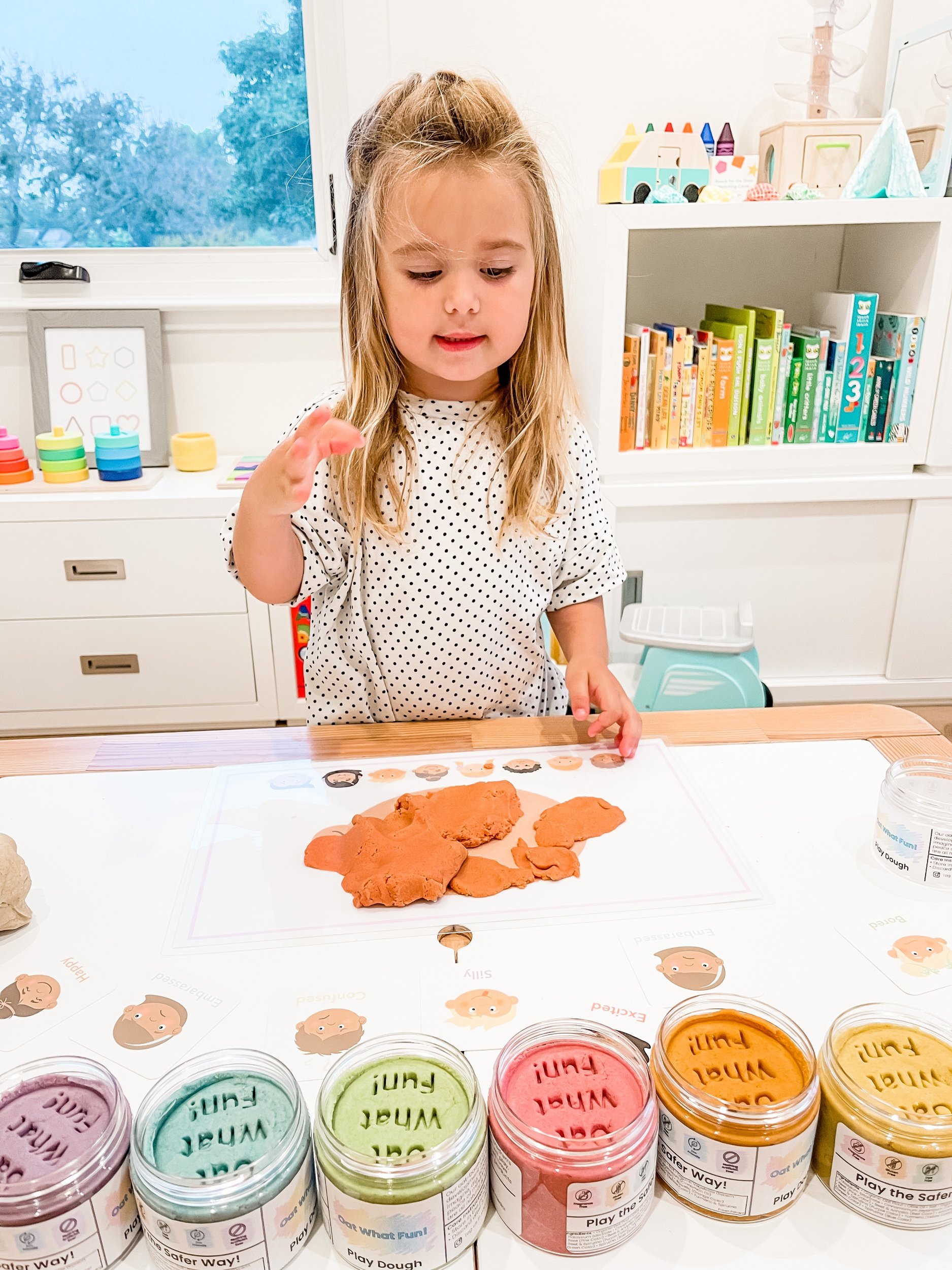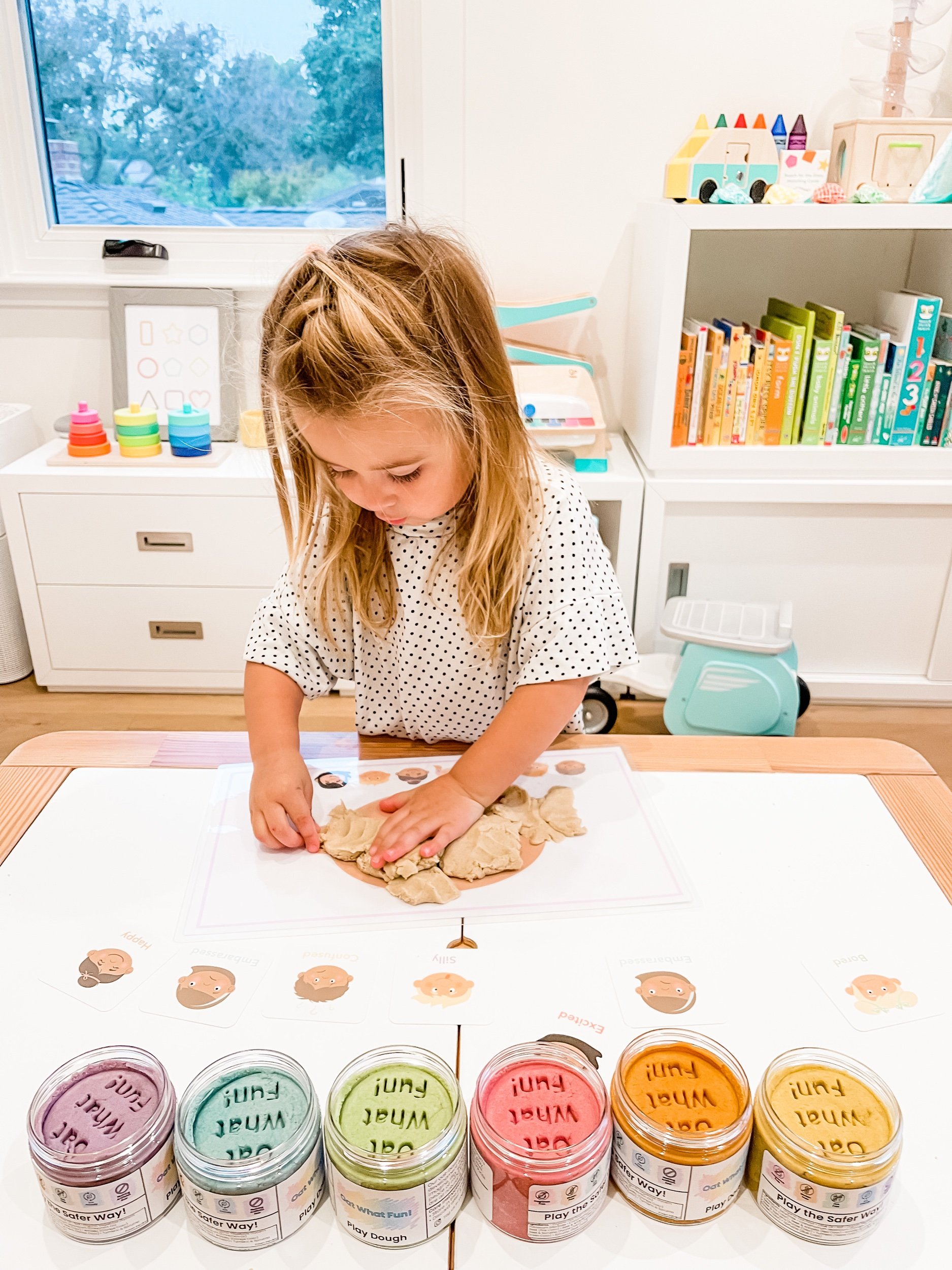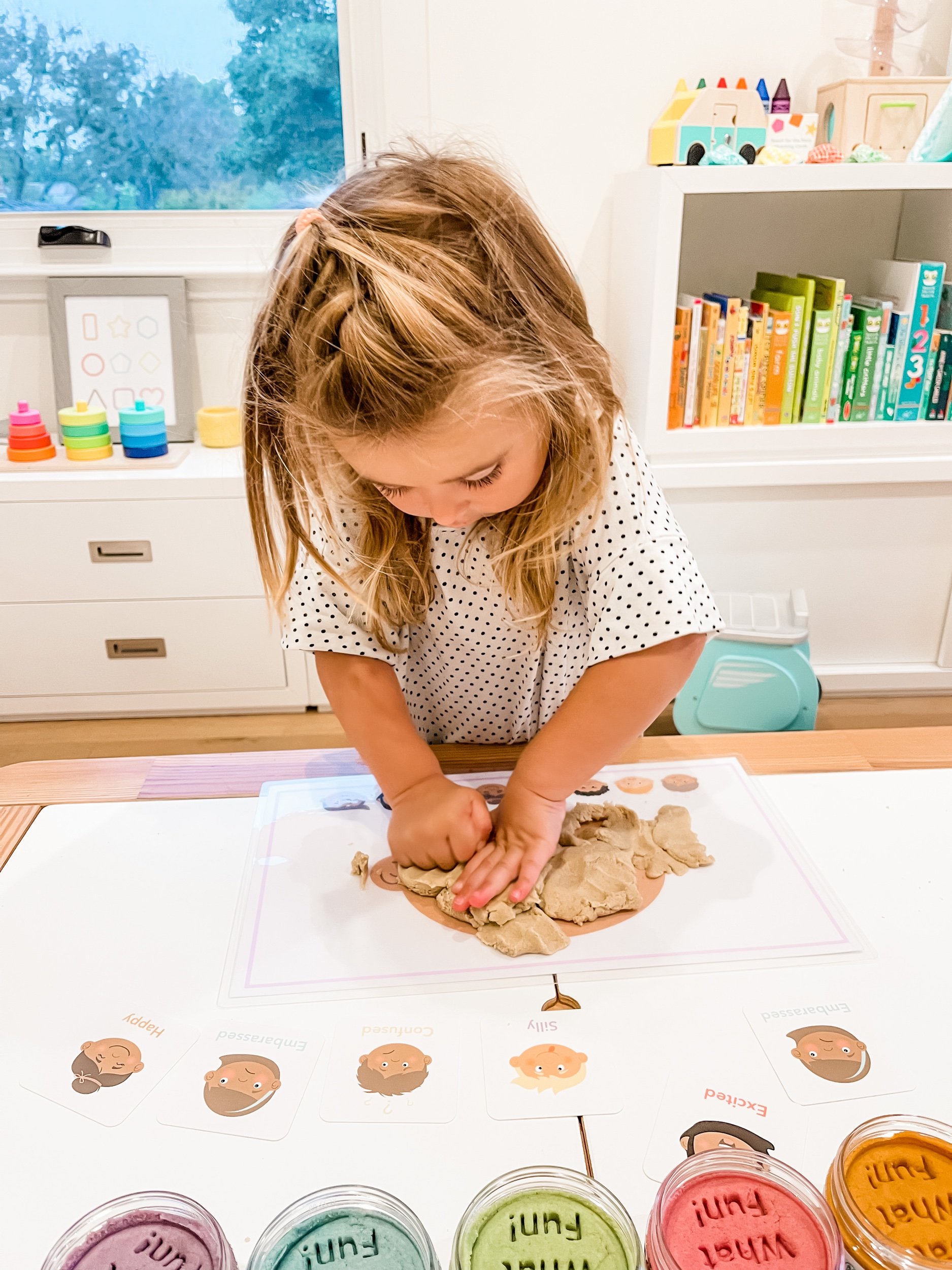Today we made the cutest little colorful faces with this awesome oat meal based playdoh from @oatwhatfun.
As parents and caregivers, we all want our children to grow up to be well-adjusted, empathetic individuals who are able to navigate the complexities of the world around them. One of the most important foundations for this development is a strong understanding of emotions.
From a very young age, toddlers and preschoolers begin to experience and express a wide range of emotions, from joy and excitement to frustration and sadness. However, at this age, children often lack the language and understanding to fully communicate and process their feelings.
That's where our emotions flashcards and memory game cards come in! These tools are specifically designed to help young children learn about and practice identifying and expressing different emotions.
Through using our flashcards, toddlers and preschoolers can learn to identify and name different emotions, such as happiness, sadness, anger, and fear. This helps to build a foundation for more complex emotional understanding and regulation later on. The memory game cards are also a fun and interactive way to reinforce this learning and make it more engaging.
Beyond just learning the vocabulary of emotions, our cards also help children to understand the causes and triggers of different emotions, and how to express them in appropriate ways. This is an essential skill for developing healthy relationships and effective communication.
Our emotions flashcards and memory game cards are also convenient and easy to use. Parents and caregivers can use them at home during playtime, during car rides, or whenever they have a spare moment. They are also durable and can withstand being handled by little hands.
In conclusion, understanding emotions is crucial for children's social and emotional development, and our emotions flashcards and memory game cards are an excellent tool for helping young children learn about and practice identifying and expressing different emotions. They are convenient, durable, and fun for both children and adults. Don't hesitate to buy our emotions flashcards and memory game cards today!
LESSON PLAN: UNDERSTANDING EMOTIONS (FOR PRESCHOOLERS)
Week 1: Introduction to Emotions
Monday:
Introduction to the concept of emotions and why it's important for children to learn about them.
Discussion of different emotions and their associated feelings, such as happy, sad, angry, and scared.
Introduce flashcards with pictures of children expressing different emotions and have the children identify the emotions they see.
Encourage the children to share times when they have felt the different emotions discussed.
Tuesday:
Review of emotions discussed yesterday and introduction of new emotions, such as excited and surprised.
Group activity: Have the children act out different emotions and have the class guess which emotion they are expressing.
Small group discussion: Have the children talk about a time when they felt a specific emotion and how they dealt with it.
Wednesday:
Introduction of the concept of triggers for emotions, such as a toy being taken away causing sadness.
Discussion of appropriate ways to express emotions and the importance of communication.
Role-playing activity: Have the children act out different scenarios and discuss appropriate ways to express emotions in those situations.
Thursday:
Review of emotions and triggers discussed throughout the week.
Introduction of the memory game cards, where children match emotion cards with the corresponding triggers.
Play the memory game as a class and discuss the different triggers for emotions.
Friday:
Review of the week's lesson on emotions.
Encourage the children to share what they have learned about emotions and ask if they have any further questions.
End the week with a class discussion on how understanding emotions can help us have better relationships and communication with others.
Note: Each day's activities should be adjusted based on the children's age and development level. Also, activities should be adapted to include different modalities such as visual, kinesthetic, auditory, and tactile to make it more engaging for kids.
